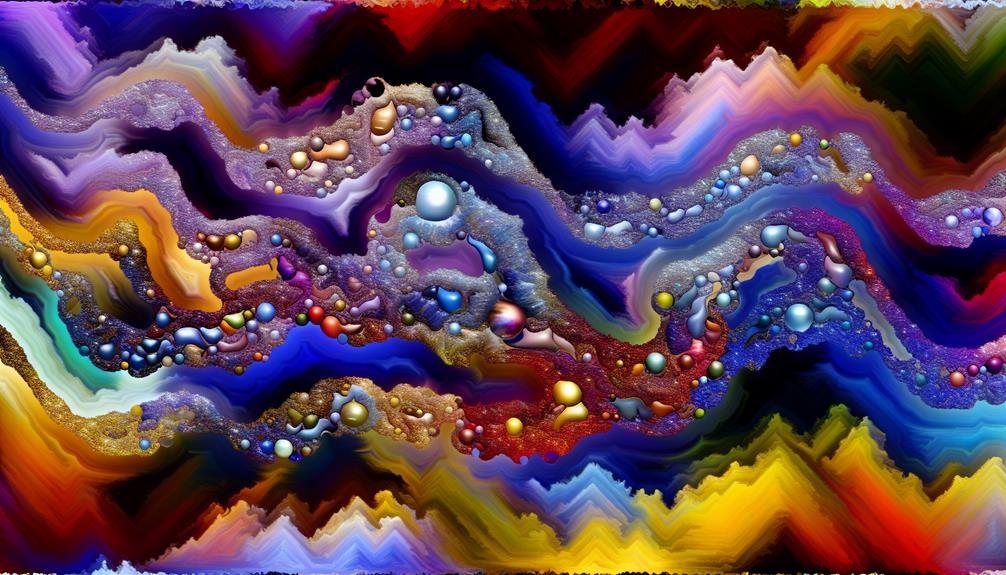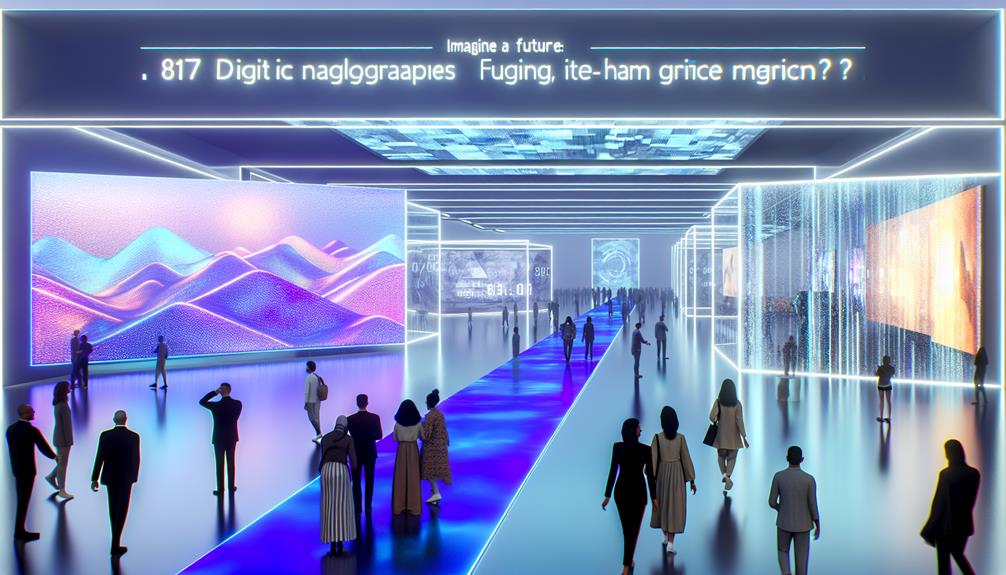Imagine a digital canvas that transcends time, merging countless moments into a singular masterpiece. You might be wondering what the most expensive NFT ever sold is and why it matters in the broader context of art and investment. This record-breaking sale not only reflects the growing allure of digital assets but also raises questions about the future of creativity and ownership in a rapidly evolving landscape. What does this mean for artists and collectors alike? The answers might surprise you as we explore the implications of this monumental sale.
Overview of NFTs

NFTs, or non-fungible tokens, represent a revolutionary shift in how we perceive ownership in the digital domain. Unlike cryptocurrencies such as Bitcoin, which are fungible and can be exchanged on a one-to-one basis, NFTs are unique digital assets verified through blockchain technology. This uniqueness allows for the establishment of clear digital ownership, making it possible for creators and collectors to transact with confidence.
NFT technology leverages smart contracts on blockchain platforms, ensuring that each token is distinct and tied to specific digital content, whether it's art, music, or virtual real estate. This creates a new marketplace where artists can monetize their work directly, eliminating intermediaries and allowing for potentially higher returns. The data-driven nature of NFTs also enables traceability, as each transaction and ownership transfer is recorded on the blockchain, providing a transparent history of ownership.
As you explore the world of NFTs, you'll notice that they've sparked debates on intellectual property rights and the valuation of digital assets. The surge in interest has led to a growing market, with sales reaching staggering sums—though it's crucial to understand that the value of an NFT is often speculative and influenced by trends, demand, and rarity.
The Record-Breaking Sale
In the domain of digital collectibles, a groundbreaking sale captured global attention when an NFT artwork titled "Everydays: The First 5000 Days" by artist Beeple fetched an astonishing $69.3 million at Christie's auction in March 2021. This sale not only shattered previous records but also ushered in a new era of digital ownership and virtual assets, highlighting the increasing legitimacy of NFTs in the art world.
You might find it intriguing to take into account several factors that contributed to this record-breaking sale:
- Cultural Significance: The artwork represents a culmination of Beeple's work over 13 years, showcasing the evolution of digital art.
- Market Dynamics: The auction attracted high-profile bidders, illustrating the growing demand for unique digital assets.
- Investment Potential: Many collectors view NFTs as a new investment class, further driving up their market value.
- Technological Innovation: The blockchain technology behind NFTs guarantees provenance and ownership verification, making virtual assets more secure.
This sale marked a pivotal moment, signaling that digital ownership could command prices previously reserved for traditional art. As you reflect on the implications, it's clear that the intersection of technology, art, and investment is reshaping the landscape of ownership. The staggering $69.3 million price tag not only reflects Beeple's talent but also indicates a shift in how society perceives value in digital assets. This event certainly sets the stage for future developments in the NFT space.
Details of the Artwork

"Everydays: The First 5000 Days" stands out not just for its price tag, but for its intricate composition and narrative depth. This digital artwork is a collage of 5,000 individual images, each created daily by the artist, Beeple, over a period of nearly 14 years. The artwork characteristics include a rich variety of themes, styles, and techniques, showcasing Beeple's evolution as an artist.
You'll notice the use of vibrant colors and striking contrasts, which enhance visual engagement. The artistic techniques employed range from digital painting to 3D rendering, reflecting both traditional and contemporary methods. The fusion of these techniques creates a unique aesthetic that captivates viewers and invites deeper analysis.
Every image within the collage tells a story, often reflecting current events, societal issues, or personal experiences. This narrative complexity is what sets "Everydays" apart from other digital works. Each section is meticulously crafted, revealing Beeple's commitment to detail and his ability to convey emotion through visual art.
The artwork's scale also plays a significant role in its impact. At over 21,000 pixels wide, it demands attention and encourages viewers to explore its intricacies. The combination of diverse artwork characteristics and innovative artistic techniques results in a piece that is both a historical document and a commentary on the digital age. This meticulous approach not only emphasizes the value of the work but also positions it as a milestone in the evolution of digital art.
The Creator's Journey
Beeple's journey as an artist is as compelling as the artwork itself. His evolution from a graphic designer to a leading figure in the NFT space illustrates how personal motivation and relentless innovation can transform an artist's career. Early on, Beeple, whose real name is Mike Winkelmann, began experimenting with digital art, which laid the foundation for his future success.
You might find it interesting to note the key aspects of his artistic evolution:
- Consistent Output: Beeple created a new piece of art every day for over 5,000 days, showcasing his commitment to growth.
- Embracing Technology: He leveraged emerging technologies and platforms, adapting to the digital landscape to reach broader audiences.
- Social Commentary: His artwork often reflects current societal issues, drawing in viewers who resonate with his messages.
- Community Engagement: By interacting with fans and other artists, he cultivated a supportive network that fueled his artistic motivation.
Through this commitment to his craft, Beeple's work began to gain traction, leading to significant recognition in the digital art world. His groundbreaking sale of an NFT for $69 million at Christie's was a culmination of years of dedication and innovation. The journey illustrates how an artist's personal motivation can lead to an unexpected and transformative impact on the art market. Ultimately, Beeple's story is a reminder of the power of creativity in the digital age, as it challenges traditional boundaries and redefines the value of art.
Market Trends and Influences

The NFT market has experienced significant fluctuations, influenced by various factors that shape its dynamics. Understanding these market factors is vital for anyone looking to navigate this space effectively. One primary influence stems from the overall cryptocurrency market volatility. When Bitcoin and Ethereum prices soar or plummet, NFT valuations often follow suit, creating a direct correlation between these assets.
Another essential market factor is the rarity and uniqueness of an NFT. Valuation methods commonly consider scarcity, artist reputation, and historical significance, which can dramatically affect prices. For instance, limited-edition releases or pieces linked to well-known creators tend to attract higher bids during auctions.
Furthermore, the introduction of new platforms and marketplaces can shift the landscape as they either enhance accessibility or create competition. User engagement on social media also plays a pivotal role. Trends often emerge from viral moments, causing sudden spikes in demand for specific NFTs, which can lead to inflated valuations that may not be sustainable over time.
Additionally, regulatory developments and the legal framework surrounding NFTs can influence buyer confidence and market stability. As governments worldwide begin to address the implications of digital ownership, the market may experience shifts based on perceived risks or opportunities.
Impact on the Art Community
Transforming the art community, the rise of NFTs has sparked both excitement and concern among artists and collectors alike. On one hand, NFTs are revolutionizing how you perceive and trade artistic value; on the other, they raise questions about the sustainability and inclusivity of this new market.
The community reaction to NFTs has been mixed, with several key themes emerging:
- Accessibility: Many argue NFTs democratize art, allowing artists to reach a global audience without traditional gatekeepers.
- Authenticity: The blockchain provides a verifiable record of ownership, fostering a new sense of trust in digital art.
- Speculation: The rapid price fluctuations can create a speculative bubble, leaving some artists wary of the sustainability of their craft.
- Environmental Concerns: The energy consumption associated with blockchain technology has raised ethical questions about the environmental impact of NFT transactions.
As you explore deeper into this evolving landscape, it's essential to understand how NFTs can elevate or undermine artistic value. While some artists have successfully capitalized on this digital medium, others fear it may dilute the essence of art itself. This tension reflects broader societal concerns about commodification in creative fields.
Ultimately, as the art community navigates these changes, the balance between innovation and tradition will define how NFTs shape future artistic endeavors. Understanding these dynamics will enable you to engage more thoughtfully with this transformative phase in art history.
Future of Expensive NFTs

As the NFT market continues to evolve, the future of expensive NFTs hinges on several important factors that could reshape its trajectory. One of the most notable influences will be the growing acceptance of digital investments among mainstream consumers. As more individuals recognize the value of digital assets, luxury collectibles in the NFT space are likely to gain traction, leading to increased demand and potentially higher prices.
Market volatility remains a concern. If you're considering investing in expensive NFTs, understanding the underlying technology and market dynamics is essential. Factors such as rarity, creator reputation, and community backing can meaningfully impact an NFT's value. The rise of fractional ownership could also democratize access to high-value NFTs, allowing more investors to participate in the market without needing substantial capital.
Technological advancements will play a critical role as well. Improved blockchain solutions with lower transaction fees and enhanced security features could attract more users, further solidifying the NFT space as a legitimate investment avenue. Additionally, collaborations between traditional luxury brands and NFT creators may redefine the meaning of luxury collectibles, blending physical and digital domains.
Frequently Asked Questions
What Platforms Are Best for Buying and Selling Expensive Nfts?
When you're looking to buy or sell expensive NFTs, consider top NFT marketplaces like OpenSea, Rarible, and Foundation. Keep an eye on NFT trading fees, as they can greatly impact your overall investment returns.
How Do I Evaluate an Nft's Potential Value?
To evaluate an NFT's potential value, utilize NFT valuation methods like historical sales data and conduct a market demand analysis. Consider trends, creator reputation, and scarcity to make informed decisions about future appreciation.
Are There Risks Associated With Investing in Expensive Nfts?
Investing in expensive NFTs can feel like walking a tightrope; market volatility and buyer psychology play pivotal roles. One misstep, and you might find your investment plummeting, showcasing the inherent risks in this digital frontier.
Can NFTS Be Insured Like Traditional Art?
Yes, NFTs can be insured similarly to traditional art, although NFT valuation and digital ownership complexities may complicate this process. Insurers often assess the market value and authenticity before providing coverage, ensuring adequate protection.
What Are the Legal Implications of Owning Expensive Nfts?
When owning expensive NFTs, you'll encounter copyright issues and ownership rights. It's essential to understand how these factors affect your investment, as they can influence resale value and intellectual property protections markedly.
Conclusion
To sum up, the staggering sale of Beeple's NFT signals a significant shift in the art world, showcasing digital dominance and demand. As the market matures, trends indicate that unique, high-value NFTs will continue to captivate collectors and investors alike. The fusion of finance and creativity fosters fresh opportunities, paving the path for future fortunes. Ultimately, the evolving ecosystem of expensive NFTs could redefine ownership and investment, making digital art a lasting legacy.
